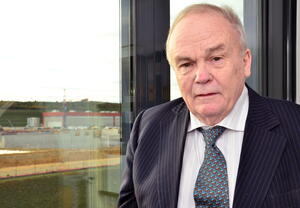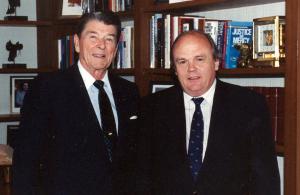Evgeny Velikhov: "I decided to deliver this idea to Gorbachev"
Academician Evgeny Velikhov, the current President of the NRC Kurchatov Institute in Moscow, has been at the head of the Russian (former Soviet) fusion program since 1973. He is also the initiator and key player in the international ITER Project. He was ITER Council Chair during the technical design phase for ITER and again at the start of ITER construction from 2010-2012.
As we approach the 30th anniversary of the Geneva Summit where the historic decision was made to unite international efforts for the construction of a new-generation fusion facility, can you share with us some of your recollections? It is well known that you were the one who proposed this idea to the new General Secretary of the USSR.
Of course there was. For example, the head of the US Department of Defense Caspar Weinberger and, in particular, his deputy Richard Perle, were totally against the initiative. He asked me a very direct question—"What do we need your nuclear fusion for?"
You mentioned that before Gorbachev's visit to Paris you visited him to express your idea. Did you know him personally, or was it just in the spirit of that time?
Yes, we knew each other personally. I could call him directly and arrange a meeting. In those days I contacted our new General Secretary quite often. Still, I must confess, the implementation of our idea for collaboration in fusion was not an easy task. But in the end we managed.
After graduating from Moscow State University, Evgeny Velikhov began his career as junior researcher at the Kurchatov Institute of Atomic Energy. He was appointed head of laboratory in 1962 and head of department in 1970. From 1971-1978 Evgeny Velikhov directed a branch of the Kurchatov Institute in Troitsk (now TRINITI). In 1988 he became the director of the Kurchatov Institute and, four years later, its president.
It is difficult to overestimate the contribution of Academician Evgeny Velikhov to global science and, in particular, to research in the area of plasma physics and controlled nuclear fusion. Following in the footsteps of Lev Artsimovich, he took the lead of his country's nuclear fusion program in 1973. He has received numerous national and international distinctions, including the Order of Merit for the Fatherland and the Order of Courage. He is a member of the Russian Academy of Sciences and holds honorary positions at a number of Russian and international universities.



